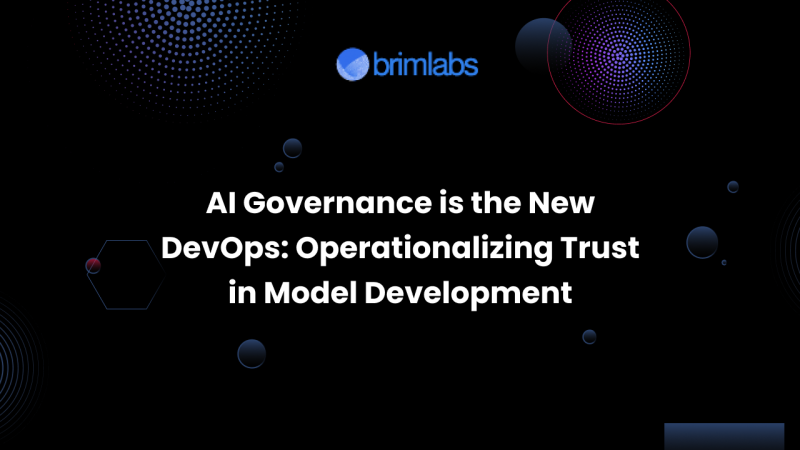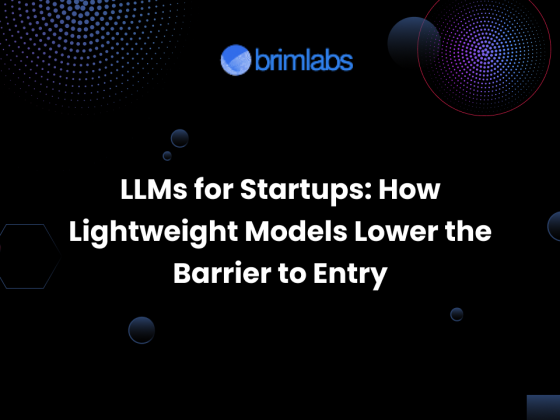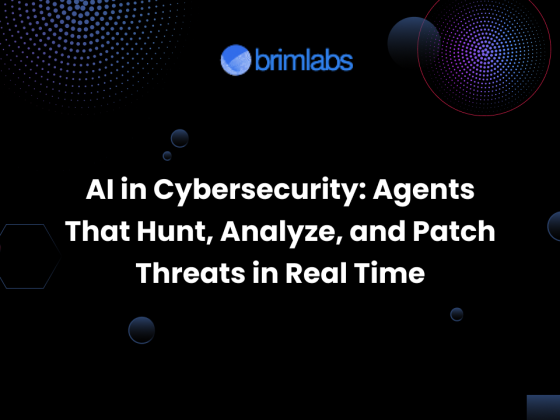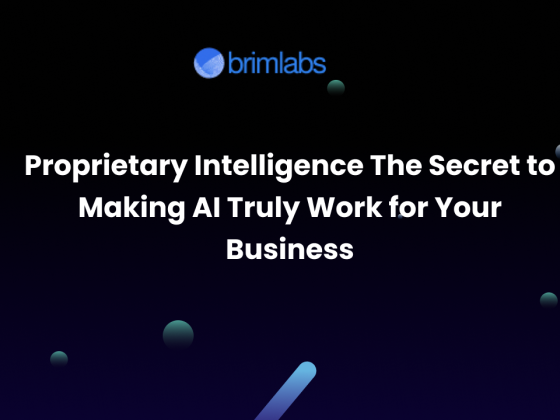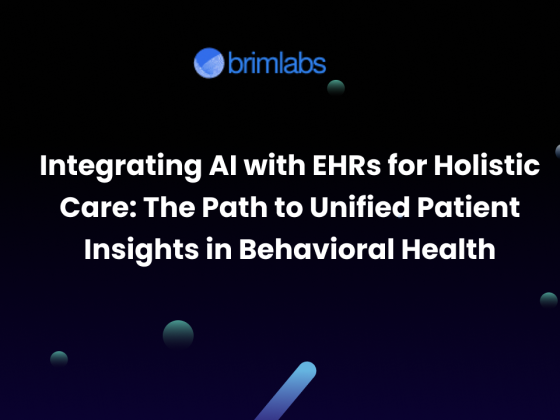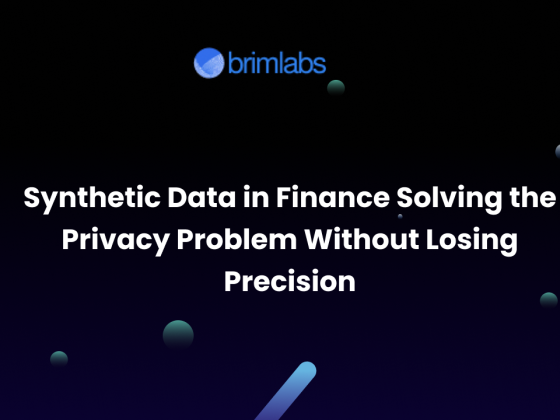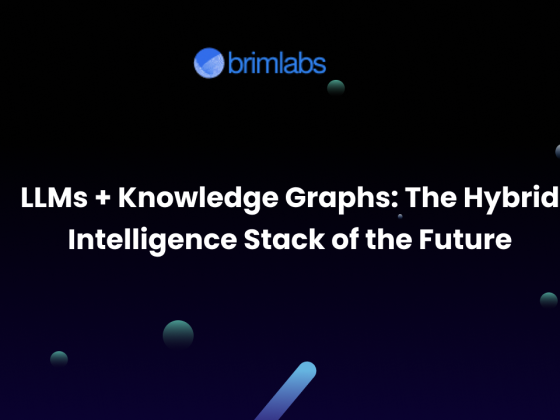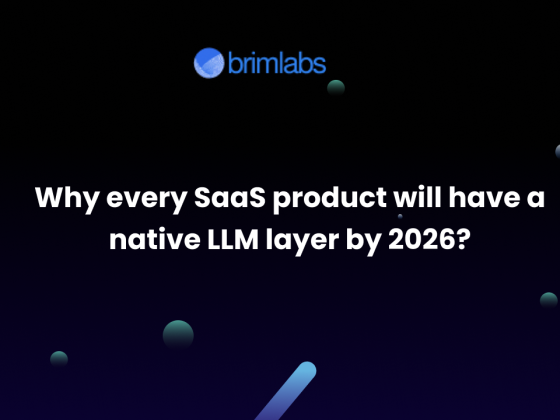AI is no longer confined to academic research or innovation labs. It involves underwriting loans, diagnosing illnesses, managing portfolios, influencing hiring decisions, and guiding military operations. In short, AI now makes real-world decisions at scale.
With this power comes responsibility. We’ve reached a point where building high-performing models isn’t enough. They must also be accountable, transparent, and safe.
What DevOps did for software, making it faster, safer, and scalable, AI governance is doing for AI. It’s not a bureaucratic burden. It’s the operational backbone of trustworthy, compliant, and auditable AI.
Welcome to the era where AI governance is the new DevOps, not a compliance checkbox, but a system-level discipline that brings structure, accountability, and confidence into AI model development.
From Policy to Pipeline
Historically, AI governance was treated as an afterthought, with policy documents, sporadic fairness reviews, or an internal committee. But this approach breaks down quickly in a world of continuous learning and automated decision-making.
Real governance must scale with your data and adapt with your models. Like DevOps, it must be embedded into daily workflows, rather than sitting outside them.
Operationalizing Governance: What It Means
For governance to become a true operational capability, like DevOps, it must be baked into every step of the AI lifecycle. Here’s what that looks like in action:
1. Model Lineage and Auditability
Every model decision should be traceable. Governance tools must record dataset versions, transformation logic, model parameters, and decision points. This makes it possible to conduct internal audits, respond to regulators, or explain decisions to users.
2. Bias and Fairness Testing
Bias isn’t just unethical, it’s a reputational and legal risk. AI governance ensures that models are tested for fairness across age, gender, ethnicity, geography, and more. These checks become as routine as unit tests in software engineering.
3. Drift Detection and Monitoring
AI systems degrade silently. Governance frameworks include real-time drift detection that alerts teams when input data or model behavior shifts from expected norms, enabling quick retraining, rollback, or human escalation.
4. Human-in-the-Loop Controls
Some decisions are too sensitive to fully automate. Governance enforces HITL workflows that route specific outputs for manual review, particularly in regulated industries like finance, healthcare, and public safety.
5. Regulatory Compliance by Design
Frameworks like the EU AI Act, GDPR, and HIPAA aren’t optional, and they evolve rapidly. AI governance tools offer built-in mappings to regulatory standards, so compliance isn’t bolted on, it’s built in from day one.
Real-World Lessons: When Governance Fails
Apple Card (2019)
Users reported that women were receiving significantly lower credit limits than men with identical financial profiles. Lacking transparency and bias auditing tools, the algorithm couldn’t be adequately explained or defended. AI governance could have caught and corrected this disparity before it became a public scandal.
Amazon’s Resume Screening Tool (2018)
Amazon’s internal recruitment AI downgraded resumes that contained the word “women’s” (e.g., “women’s chess club”), reflecting biases in the historical hiring data. Governance protocols with fairness testing and explainability checks could have flagged this issue early.
Italy’s Ban on ChatGPT (2023)
The Italian data protection authority temporarily banned ChatGPT due to concerns over data usage and privacy under GDPR. A robust AI governance layer could have prevented non-compliance through better data handling protocols and consent management.
COVID-19 Model Failures in Healthcare
AI models used to predict sepsis or patient deterioration faltered during the pandemic as the data distributions changed. Without governance-led drift detection, these models continued making poor recommendations in high-risk environments.
These cases reveal a pattern: without operational AI governance, even the most advanced models are liabilities.
Why Now? What’s Driving This Shift?
Several forces are converging:
- Regulators are moving fast. From the EU AI Act to the U.S. Blueprint for an AI Bill of Rights, oversight is tightening.
- Enterprise leaders need visibility and control over how AI decisions are made.
- Customers and users are demanding transparency and fairness.
- Investors and boards want risk mitigation and audit readiness.
AI governance is now as much about business continuity and brand protection as it is about ethics.
Brim Labs: Building AI with Guardrails
At Brim Labs, we help startups, enterprises, and institutions bake governance into the fabric of AI development. We don’t just build models, we operationalize trust.
We enable teams to:
- Run automated fairness, robustness, and explainability tests
- Monitor deployed models for drift, anomalies, and bias
- Track model lineage from dataset to decision
- Align systems with global compliance frameworks like GDPR, HIPAA, and SOC 2
- Add human-in-the-loop escalation paths
- Maintain audit-ready documentation and alerts
Whether you’re training LLMs, deploying agentic AI systems, or launching decision-critical models, we ensure your AI is safe, scalable, and defensible.
Final Thoughts
Just as DevOps revolutionized the software lifecycle by embedding testing, deployment, and monitoring into everyday work, AI governance is now doing the same for models.
It ensures that AI is not just smart, but safe. Not just accurate, but accountable.
If you’re scaling AI without governance, you’re not scaling responsibly, you’re just increasing your exposure to risk.
AI governance is the new DevOps. And in the future of AI, trust is not a nice-to-have. It’s the infrastructure.
Want to explore how Brim Labs can operationalize trust in your AI pipeline?
Let’s talk: https://brimlabs.ai

